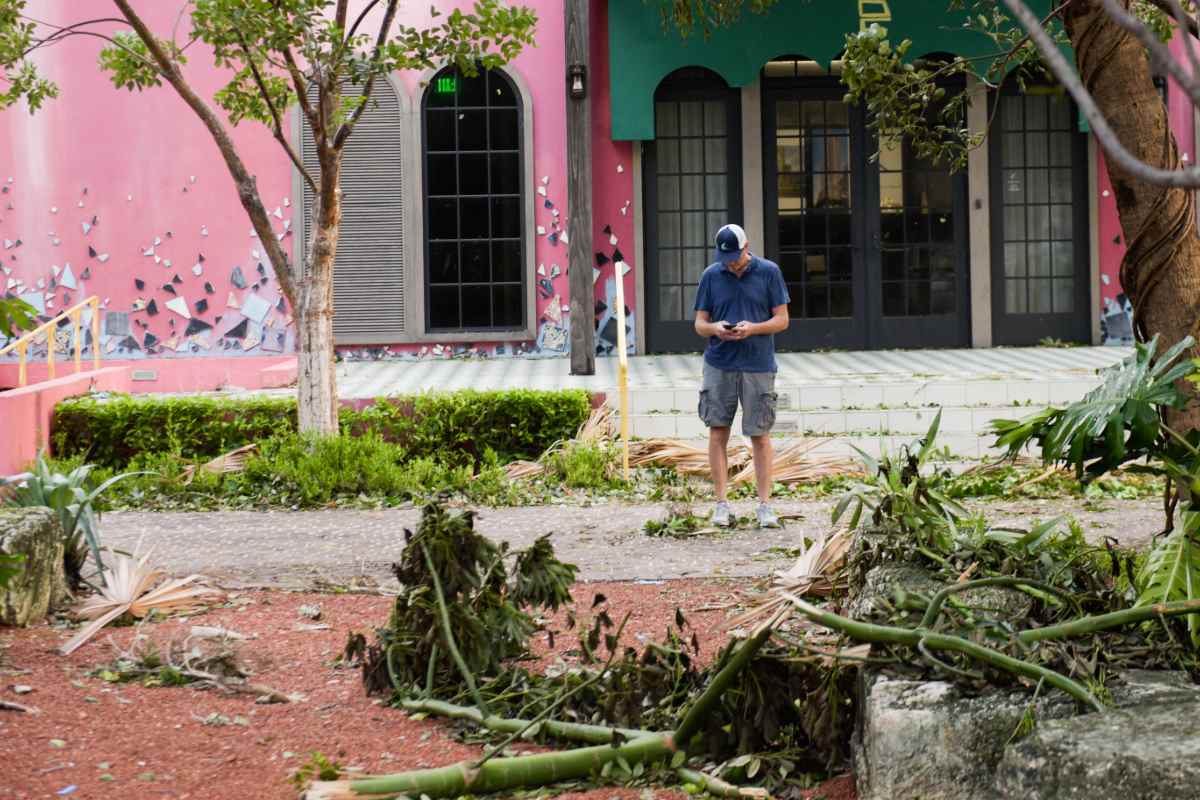
A resident of southern Florida uses their phone in the wake of Hurricane Irma. Location-based social networks like Twitter can provide valuable insight for disaster response, according to a new study by UAlberta scientists. Photo credit: Getty Images
Location-based social networks, such as Twitter, can provide critical insight and information for disaster response, according to new research by University of Alberta scientists.
The study examined tweets sent in Florida in 2017 during Hurricane Irma, when more than 6 million people were evacuated. The researchers used a machine learning algorithm to classify tweets by content, region, and sentiment.
"Our research shows that it was possible to know not just what was happening during Hurricane Irma, but where it was happening," said Darcy Reynard, PhD candidate in the Department of Earth and Atmospheric Sciences and lead author on the study.
"We demonstrated that location information embedded in tweets can be useful to gain further insights about policy-relevant content. This information can be used to develop policy both during and after disasters. The process has the likelihood of increasing response accuracy and aiding efficient resource allocation decisions during and after a disaster."
Twitter provides real-time data about the experiences of those directly affected by a disaster. The study found that longer tweets were more likely to include useful sentiment-based, or emotional, content. More popular tweets were less likely to include useful information about the disaster, and negative sentiments were expressed more often in areas with young families.
"Research using location-based social networks, like Twitter, has an extra advantage compared to other social media platforms since tweets can include a geospatial component," said Reynard. "This allows us to identify a user's location at the time the tweet was created so that researchers can analyze not only what topics are being discussed but also where they are being discussed."
The paper, "Harnessing the power of machine learning: Can Twitter data be useful in guiding resource allocation decisions during a natural disaster?" was published in Transportation Research Part D: Transport and Environment(doi: 10.1016/j.trd.2019.03.002).